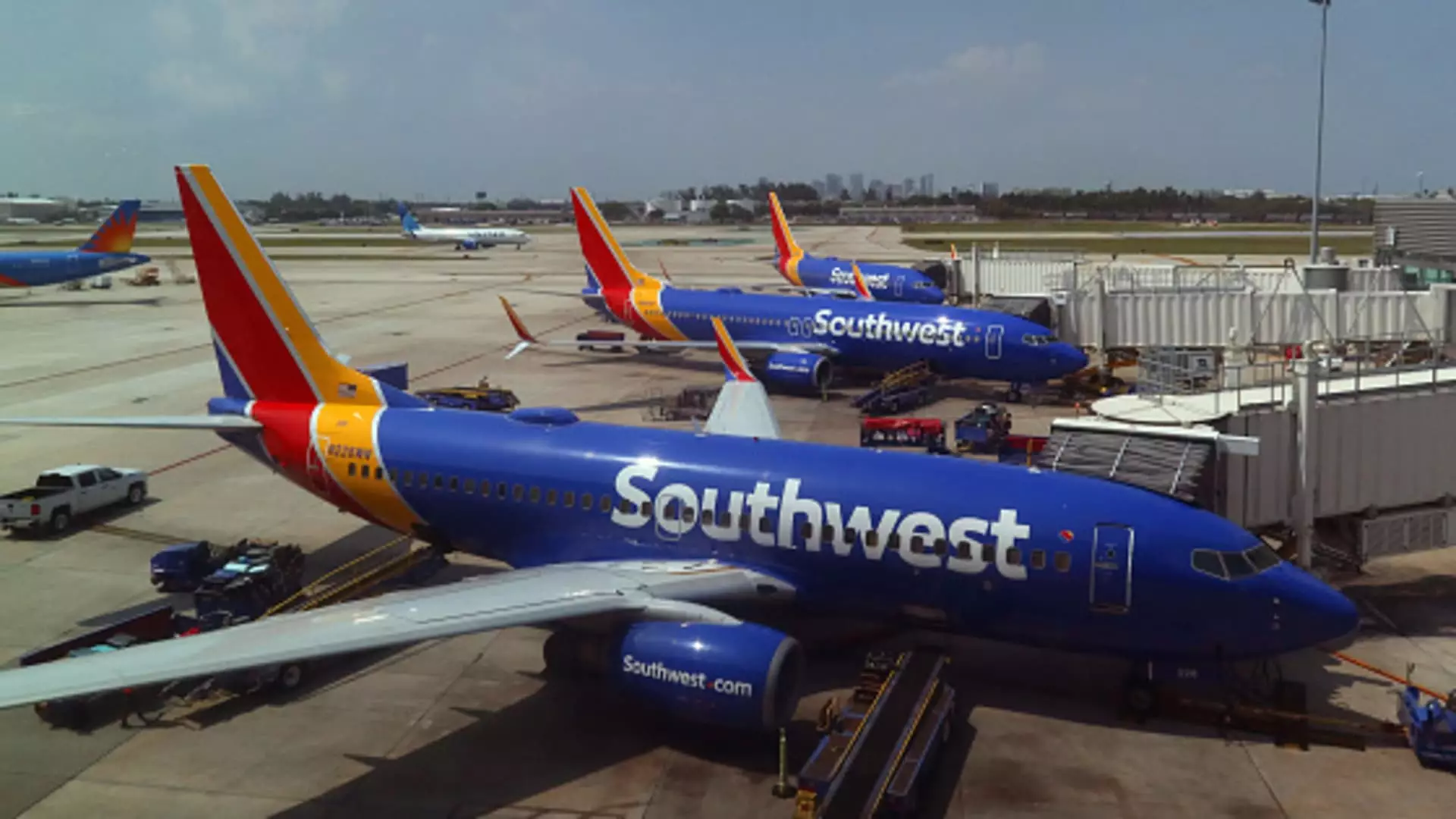Southwest Airlines recently announced a potential drop in unit revenue for the third quarter, highlighting the challenges faced by airlines in an oversupplied U.S. market. The airline expects unit revenue to decrease by as much as 2% compared to the previous year, reflecting a trend of discounted ticket prices during what is typically a lucrative period for the industry. Additionally, Southwest anticipates a rise in nonfuel costs of up to 13%, which could continue to weigh on the airline’s financial performance through the end of 2024.
In the second quarter, Southwest Airlines reported mixed results compared to Wall Street expectations. Despite achieving record revenue of $7.35 billion, a 4.5% increase from the previous year, the airline’s profit declined by over 46% to $367 million, or 58 cents per share. Revenue per available seat mile decreased by 3.8%, aligning with the carrier’s revised forecast. However, Southwest managed to exceed analysts’ projections with adjusted earnings per share of 58 cents. CEO Bob Jordan acknowledged the impact of both external and internal factors on the airline’s performance stating, “Our second quarter performance fell short of what we believe we are capable of delivering.”
Boeing Delivery Challenges and Investor Pressure
Southwest Airlines revealed ongoing discussions with Boeing for compensation, citing delays in aircraft deliveries due to the manufacturer’s safety and manufacturing issues. The airline now expects only 20 aircraft deliveries from Boeing this year, significantly lower than previous estimates. Amid pressure from investors, particularly from Elliott Investment Management which disclosed a substantial stake in the carrier, Southwest is under scrutiny to increase revenue and potentially undergo leadership changes. These developments come as the airline seeks to revamp its operations and address investor concerns.
Transformational Initiatives and Operational Changes
To address near-term revenue challenges and implement long-term growth strategies, Southwest Airlines announced significant changes to its business model. The airline plans to abolish its open seating plan, introduce seats with extra legroom on Boeing aircraft, and offer overnight flights. These adjustments mark a significant shift in Southwest’s operating approach, aiming to align the airline more closely with its network carrier competitors. CEO Bob Jordan emphasized the urgency and intentionality behind these transformative initiatives, signaling a strategic focus on driving revenue growth in the coming years.
Delta Air Lines and United Airlines executives have expressed expectations of U.S. capacity moderation starting in August, potentially leading to increased fares. This projection aligns with broader industry trends as airlines navigate market pressures and seek to optimize revenue streams. As Southwest Airlines navigates evolving market conditions and implements strategic changes, the industry as a whole is poised for adjustments that could impact pricing dynamics and competitive positioning.
Southwest Airlines’ revenue forecast for the third quarter reflects the complex challenges facing the U.S. airline industry amid oversupply and pricing pressures. As the airline grapples with revenue decline and operational adjustments, its strategic decisions will shape its future trajectory in an increasingly competitive market landscape.

